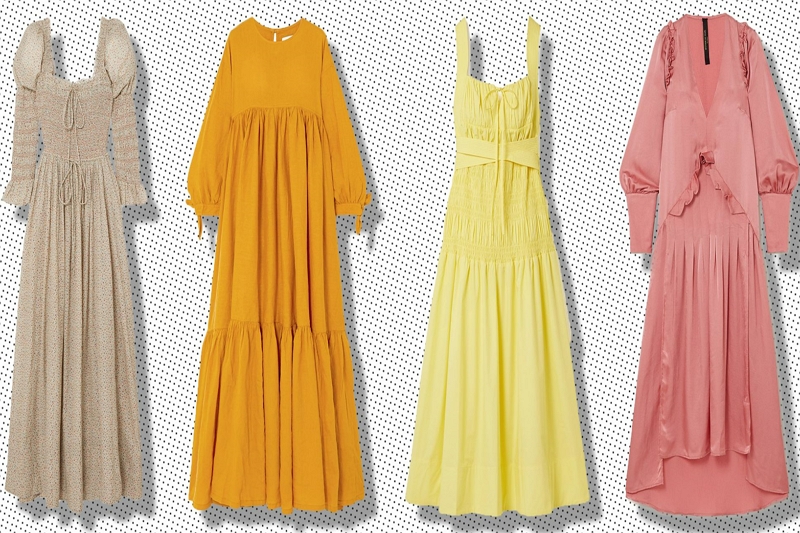When do I start wearing maternity clothes? This is a common question a lot of new mothers ask. In this blog post, we will give a detailed guide on when to start wearing maternity clothes.
Maternity clothes are not only cute but also comfortable. Once your bump starts to grow, you’ll appreciate the stretchy material of maternity skirts and dresses over normal clothing.

The same goes for pants—maternity jeans have a higher-rise that can accommodate an expanding belly. You don’t want anything too tight or binding either because it will be uncomfortable as your belly grows larger during pregnancy.
If you’re just starting out wearing maternity clothes, stick with looser fitting tops until after the first trimester when you start showing more visibly, then switch into fitted pieces like tanks and tees in bigger sizes that go up top around the third month when your baby bump is already noticeable enough that people won’t think they’re seeing things!
Don’t: wear too-tight clothes. It can be uncomfortable as your belly grows larger during pregnancy and you don’t want anything that will be too binding.
Do: start with looser fitting tops until after the first trimester when it becomes noticeable, then switch into fitted pieces like tanks and tees in bigger sizes around the third month. Once people see a baby bump they won’t think it’s something else!
What benefits am I entitled to if I don’t return to work after maternity leave?
Maternity pay can be claimed for up to 39 weeks. If you do not return to work after maternity leave, you may still be entitled to claim antenatal care and antenatal education expenses as a deduction from your taxable income during the tax year of the child’s birth if:
#1 You were employed by an employer who has paid Class One secondary NICs in respect of at least 13 weeks before and 29 weeks after the week in which your baby is due.
#2. Your partner was so employed throughout this period – even though they may have been absent on unpaid parental leave – provided that their earnings would have counted towards any entitlement that you had. It doesn’t matter whether your absence falls within one continuous block (from the first day of pregnancy) or not.
If you do not meet these conditions, then the expenses will be allowable as a deduction from your taxable income during the tax year of antenatal education undertaken by either parent if: You were employed throughout this period, or Your partner was so employed in respect of at least 13 weeks before and 29 weeks after the week in which your baby is due provided that their earnings would have counted towards any entitlement that one had.
These rules also apply to maternity allowance claimants who were unemployed during pregnancy for a continuous eight week period immediately preceding the claim (for example through illness). If neither you nor your partner meets all these conditions then only certain classes of expenditure are deductible while others may qualify for some relief under separate benefit rules.
When should I start my maternity leave?
It’s best to start your maternity leave when you are about two months pregnant. That will give you time for the baby to settle into a routine while still in utero and not be born early if it is before 38 weeks gestation.
Your doctor can help determine exactly how long after conception that should be, but generally speaking, four or five months along seems like a good amount of time.
However, some women find themselves with serious morning sickness during this period which makes working very difficult. If possible, err on the side of caution and go out earlier rather than later; there’s no harm done either way (though once your official due date arrives any days off work could potentially impact your unemployment benefits). Just make sure to get all the necessary paperwork in order well before your due date.
What is the qualifying week for maternity pay?
The qualifying week for the basic rate and the enhanced maternity pay is 39 weeks. The total number of weeks would be 52 if you include the two extra weeks that are only available to employees with at least 26 consecutive weeks’ service who have a reasonableness period of no more than 17 consecutive calendar days.
If an employee starts working on January 31st 2015, she will qualify for SMP from March 11th 2015 i.e., after six months but less than eleven months as one month’s notice was given before starting work (the first day being February 28th). She can claim up to November 12th 2016 which means it takes her ten months in addition to seven Sundays counting towards holiday entitlement or other contractual leave entitlements should they exceed the statutory entitlement.
Do employers have to pay statutory maternity pay?
Employers do not have to pay their staff statutory maternity pay unless they are classed as an ‘employer’. For the employer to be considered an employer, it needs to meet certain criteria, such as employing at least one member of staff on average per week over eight weeks before the 15th week before your due date and paying them above a certain level each week.
If you believe that your employers should provide you with SMP then speak directly with your human resources department or manager about this issue. You can also seek advice from ACAS (Advisory, Conciliation and Arbitration Service) if required who will work alongside you in resolving any issues regarding maternity rights within the workplace.
